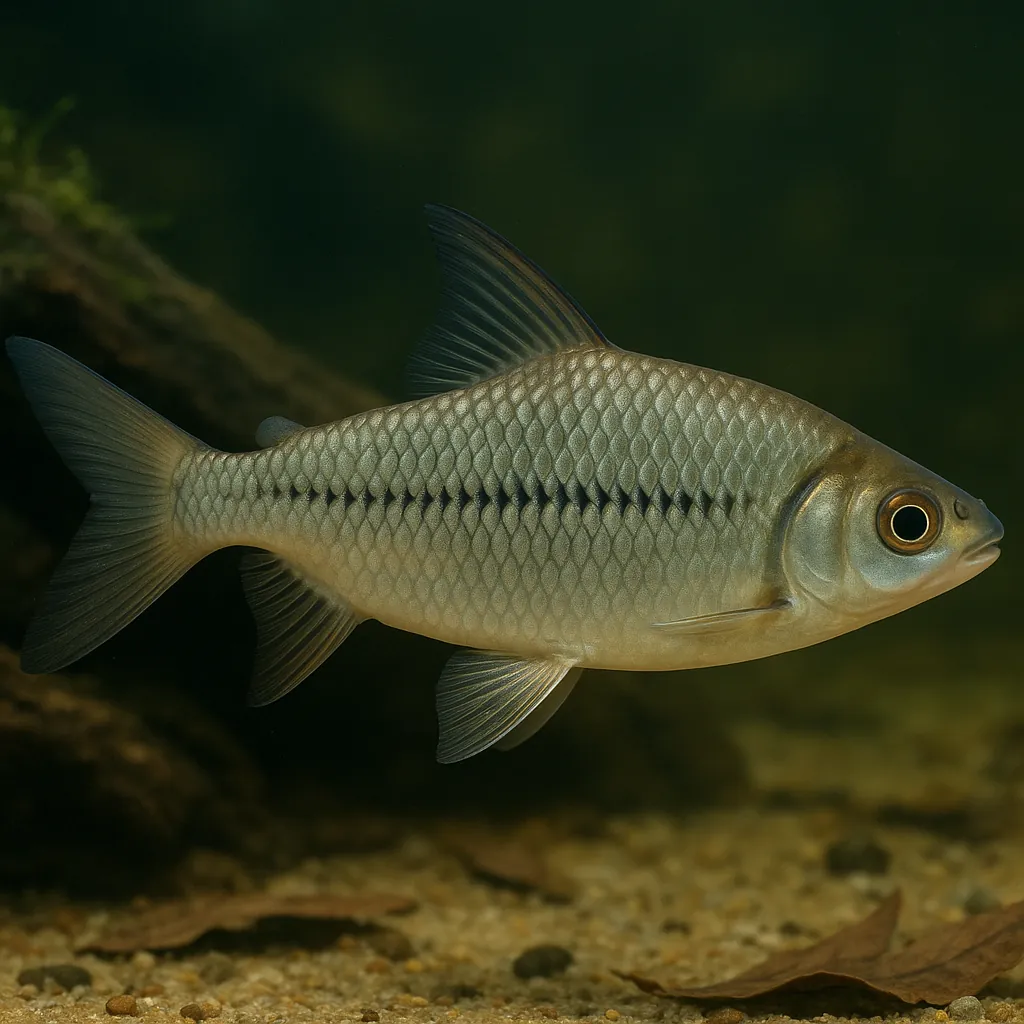
Flagtail catfish
Introduction
The Flagtail Catfish (Dianema urostriatum) is a captivating freshwater species cherished by aquarists for its peaceful demeanor and unique appearance. Native to the Brazilian Amazon basin, this catfish features a distinctive flag-like tail, making it a standout addition to community aquariums. Its manageable size and straightforward care requirements make it an excellent choice for both novice and intermediate fishkeepers.
What makes the Flagtail Catfish a popular choice among aquarists?
Its peaceful nature, striking tail pattern, and adaptability to various tank conditions contribute to its popularity.
Is the Flagtail Catfish suitable for beginners?
Yes, due to its hardy nature and ease of care, it's well-suited for beginners.
Care and Environment
Providing optimal care for the Flagtail Catfish involves replicating its natural habitat and meeting its specific needs.
What is the minimum tank size required for a Flagtail Catfish?
A minimum tank size of 140 liters (approximately 37 gallons) is recommended to accommodate a small group of these active fish.
What are the ideal water parameters for this species?
Maintain a temperature between 25-28°C (77-82°F), pH levels from 6.0 to 8.0 (ideally on the lower end), and water hardness between 5-20°H.
Effective filtration is crucial to keep the water clean and well-oxygenated. A moderate water flow mimicking their natural slow-moving habitats is beneficial. Standard aquarium lighting suffices, but ensure the tank has shaded areas to provide comfort.
As omnivores, Flagtail Catfish thrive on a varied diet. Offer high-quality sinking pellets or wafers as staples, supplemented with live or frozen foods like bloodworms, brine shrimp, and chopped earthworms. They may also accept blanched vegetables such as spinach or zucchini. Feeding in the evening aligns with their nocturnal activity patterns.
In terms of tank decor, a sandy substrate with driftwood and roots creates a natural environment. Adding dried leaves can further simulate their native habitat. Ensure ample hiding spots and open swimming areas to cater to their exploratory nature.
While generally hardy, Flagtail Catfish can be sensitive to poor water conditions. Regular water changes and monitoring are essential to prevent stress and disease.
How often should I perform water changes for Flagtail Catfish?
Regular water changes, such as 25% weekly, are recommended to maintain optimal water quality.
Origin and Habitat
Flagtail Catfish are indigenous to the Brazilian Amazon basin, predominantly inhabiting slow-moving creeks, tributaries, floodplain lakes, and ponds. These environments are characterized by soft substrates, abundant vegetation, and gentle water flow.
What type of environment do Flagtail Catfish prefer in the wild?
They favor slow-moving waters with plenty of cover, such as submerged roots and leaf litter.
Do they experience seasonal changes in their natural habitat?
Yes, their habitats can undergo seasonal variations, including changes in water levels and flow during rainy seasons.
Temperament and Compatibility
Flagtail Catfish are peaceful and sociable, making them excellent candidates for community tanks. They coexist well with other non-aggressive species of similar size.
Can Flagtail Catfish be kept with smaller fish?
While generally peaceful, they may prey on very small fish, so it's advisable to choose tankmates that are not diminutive.
Is it better to keep Flagtail Catfish alone or in groups?
They are more active and display natural behaviors when kept in groups of 3-6 individuals.
Suitable tankmates include tetras, peaceful cichlids, Corydoras, and smaller Loricariids. Avoid housing them with large or aggressive species to prevent stress and potential conflicts.
Interesting Facts
Flagtail Catfish exhibit unique behaviors uncommon among catfish. Notably, they often swim in midwater shoals, especially when kept in groups, displaying synchronized movements.
Do Flagtail Catfish have any special breeding behaviors?
Breeding in captivity is rare, and specific behaviors are not well-documented.
Are they active during the day or night?
They are primarily nocturnal but can exhibit diurnal activity, especially in well-established, comfortable environments.
Sources
All information in this article has been gathered from the following reputable sources:
Overview
Recommended Tank Size 37 Gallons (suitable for a small group) |
Minimum Group Size 3 |
Minimum Tank Volume 37 Gallons |
Maximum Adult Length 4.9 inches |
Average Adult Length 4.9 inches |
Shoaling (6+ required) Yes |
Preferred Water Type Freshwater, soft, acidic |
Temperature Range (°C) 25-28 |
pH Range 6.0-8.0 |
Water Hardness (dGH) 5-20 |
Typical Lifespan (years) 5 years |